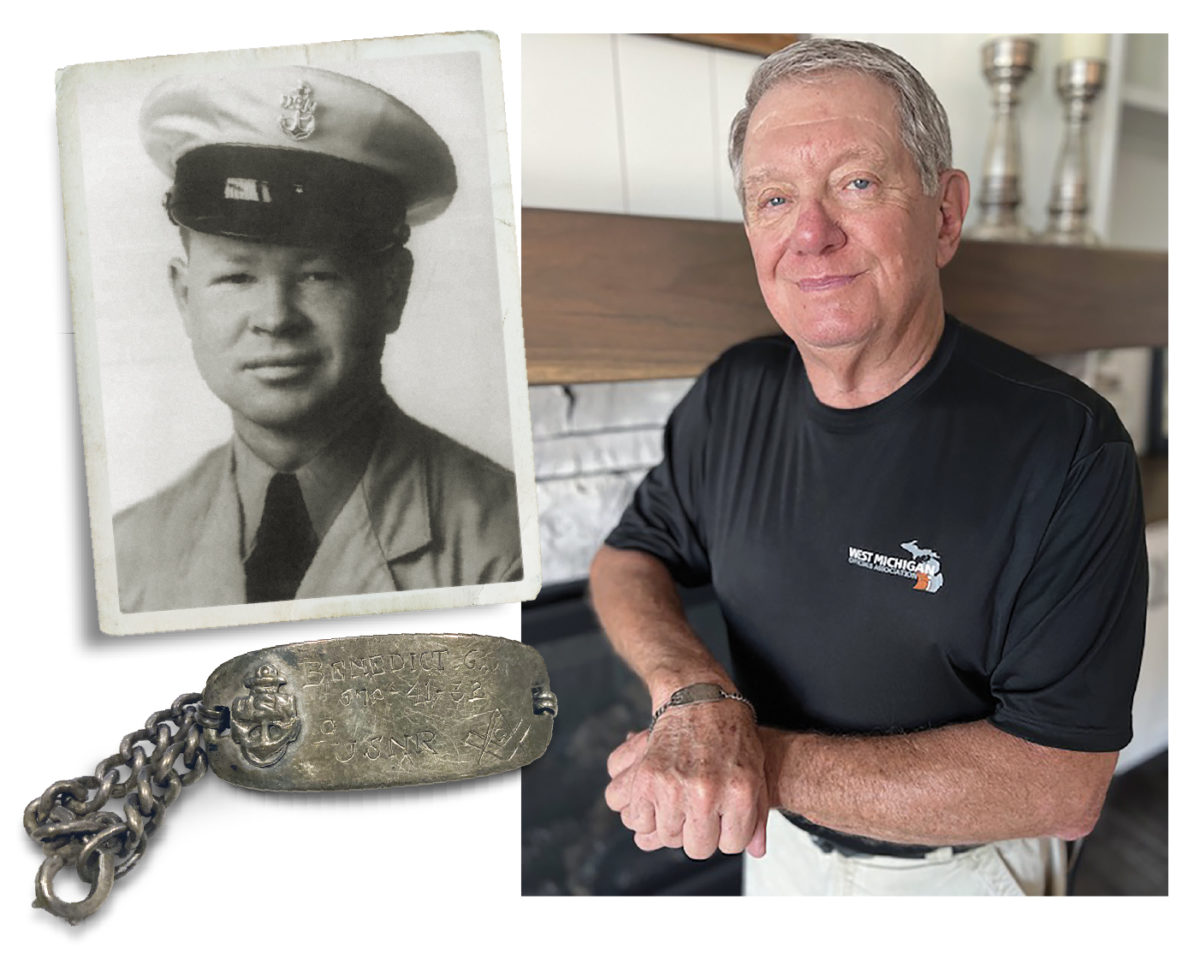Thanks to some sleuthing by a man who is a funeral director and a World War II subscriber, a wartime-era bracelet has found its way home.
The journey began when Henry Kliman of Plano, Texas, decided to clear out some keepsakes, including a few that had belonged to his late father-in-law, Paul Balkin, an infantryman in Europe during the war. Among them was a bracelet inscribed with the name “Benedict G. W.” and a Freemason symbol.
Kliman turned to World War II magazine for help, and Josh Schick, a curator at the National WWII Museum in New Orleans and a contributor to the magazine’s “From the Footlocker” column, took it from there. Studying a roster in the museum’s collection and a genealogical website, Schick found that a man named Paul Balkin served in Company M, 141st Infantry Regiment, 36th Infantry Division, active in France and Germany starting in August 1944.
Next Schick started looking for “Benedict G. W.” The search was made easier because Benedict’s service number is etched on the bracelet. Using the same ancestry website, the curator got into the U.S. Navy’s muster rolls—quarterly accounts of where sailors were stationed, on ship or shore—and found that a G. W. Benedict had served as a Seabee with the 21st Naval Construction Battalion in the Aleutians and, later, on the Pacific island of Tinian. Then, searching the “Find a Grave” website, Schick located the grave of a G. W. Benedict in Duncan, Oklahoma, about 80 miles south of Oklahoma City; the headstone offered another promising clue—a Freemason symbol that matched the one on the bracelet.
After the magazine published these findings in the October 2021 issue, reader Babe Grissom, a funeral director in Kissimmee, Florida, took up the hunt. Grissom says veterans of the burial business are used to tracing the whereabouts of the dead. “Being funeral directors—we know who to call,” he said. “We just keep checking and getting a clue here or there.” After contacting the cemetery in Oklahoma, Grissom confirmed the identity of the man buried there and found his son, Bene “Lynn” Benedict, living in Alto, Michigan.
Lynn Benedict said he was teaching a class at Muskegon Community College when the office called and said a funeral director was on the line. Hearing that his father’s bracelet had re-emerged after eight decades was “like hitting me across the side of the head,” he said. It’s still not clear how a bracelet belonging to a navy Seabee who served in the Pacific wound up alongside the belongings of an army infantryman who served in Europe, though Lynn Benedict did clear up one detail: the “G” in “G. W.” did not stand for Gould, as the magazine’s piece said, but “Golden,” as in “Golden Willis”—a name he says his father never liked. The errant name came from inaccurate information on a Naval History and Heritage Command website.
G. W. Benedict, who worked before and after the war in manufacturing for the oil services company Halliburton and died in 1982, never talked much about the war—though he did enjoy reunions with his fellow Seabees. “They were solid as a rock,” Benedict said. “It was a brotherhood.”
World War II next put Benedict in touch with Kliman, who mailed him the bracelet in May. “You cry at first,” Benedict said. “To know my dad had it, and he wore it. It’s family. It’s history. It’s your dad.”






